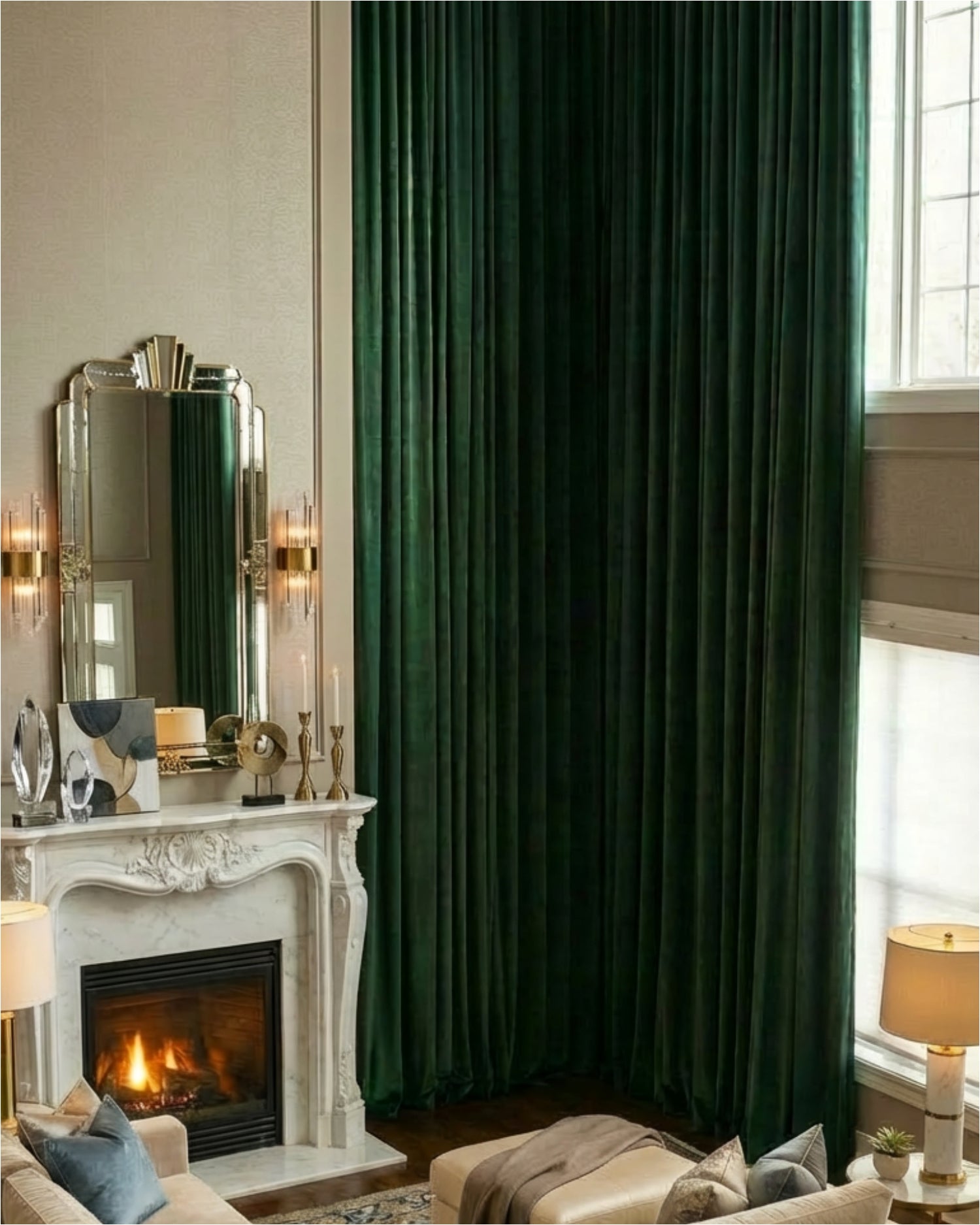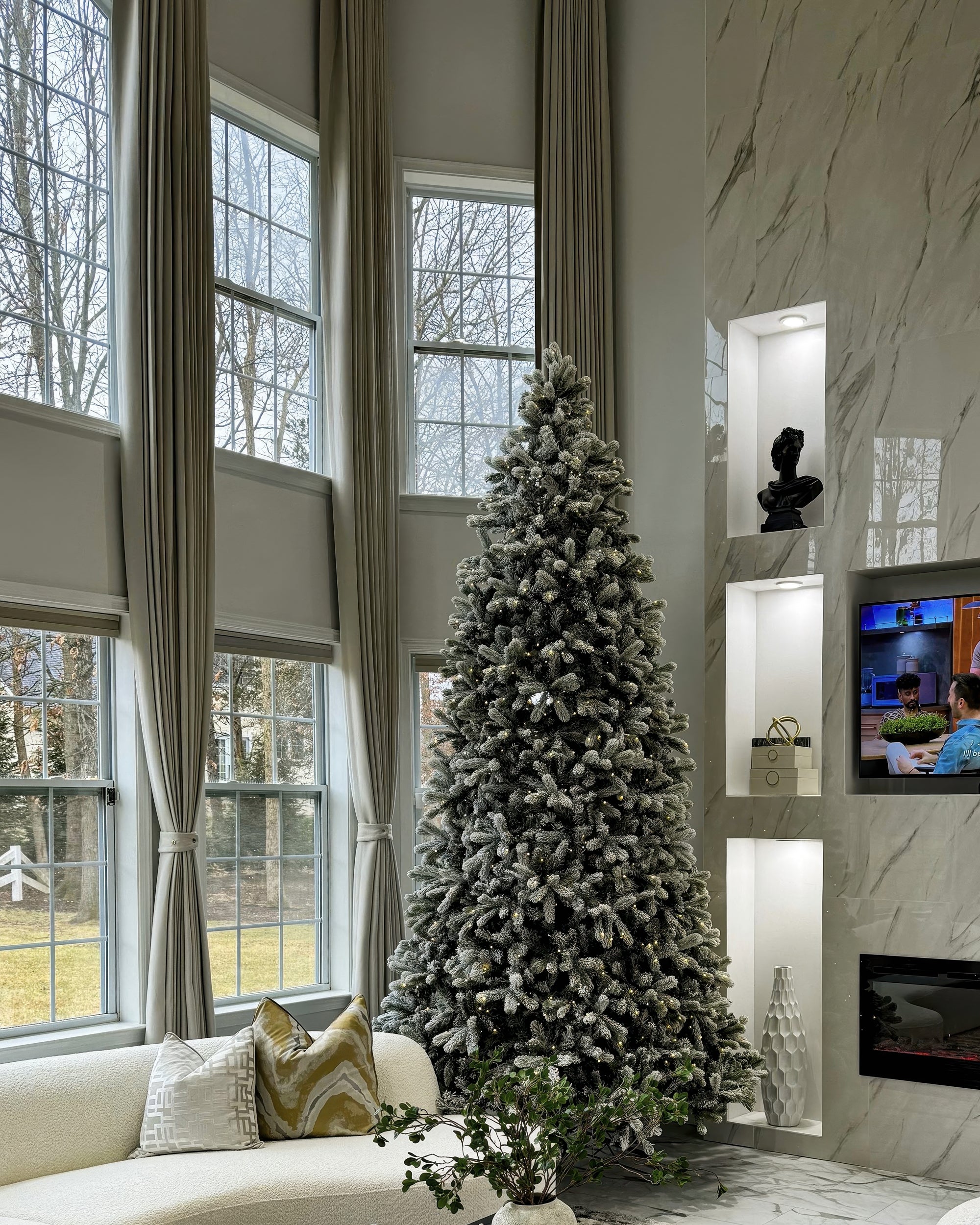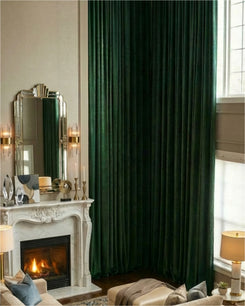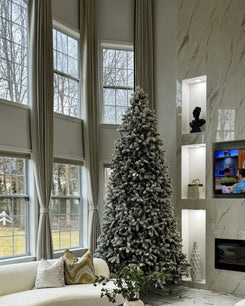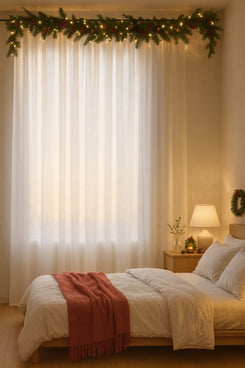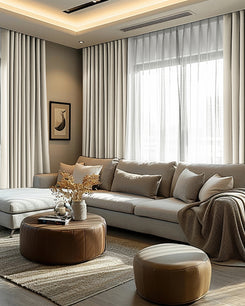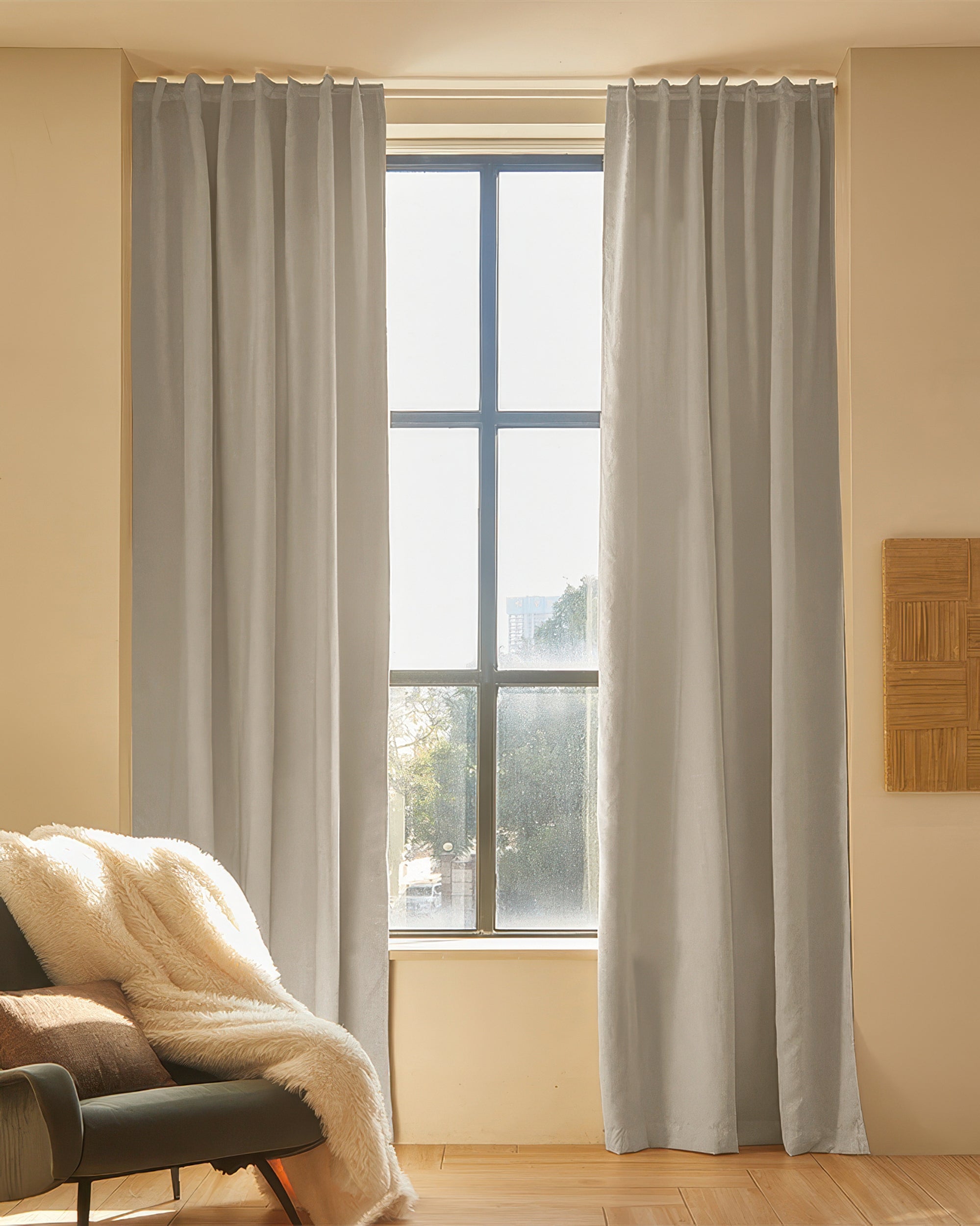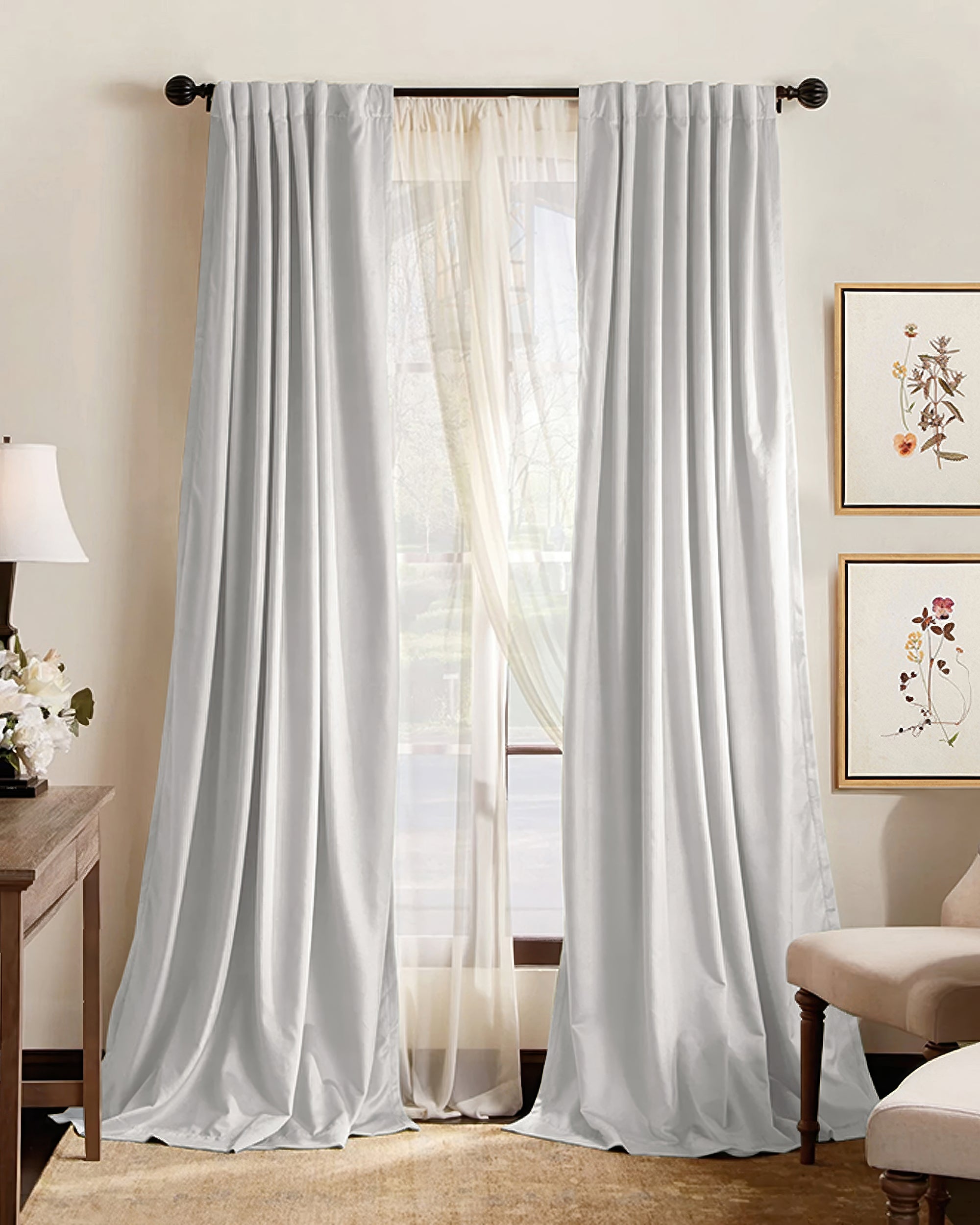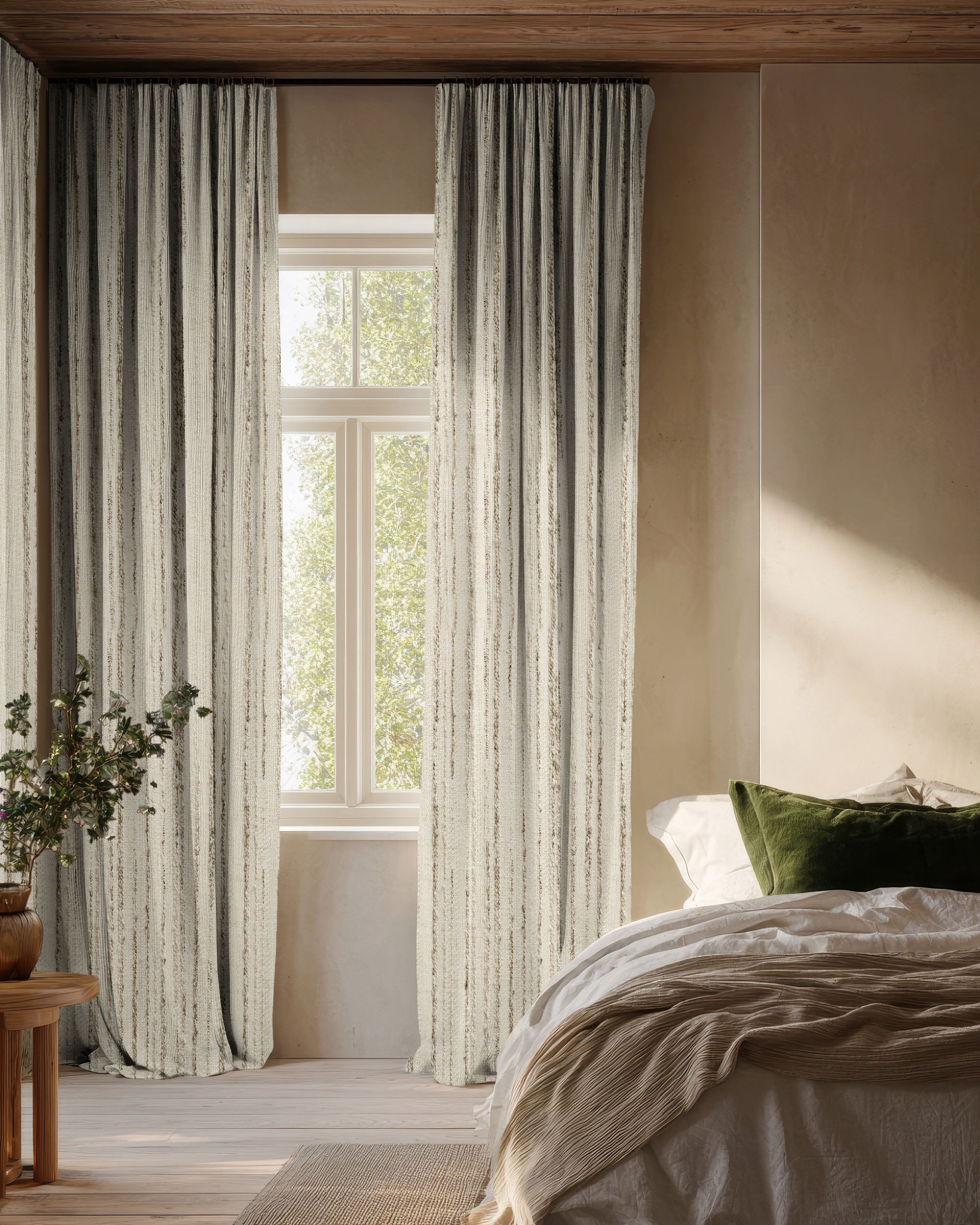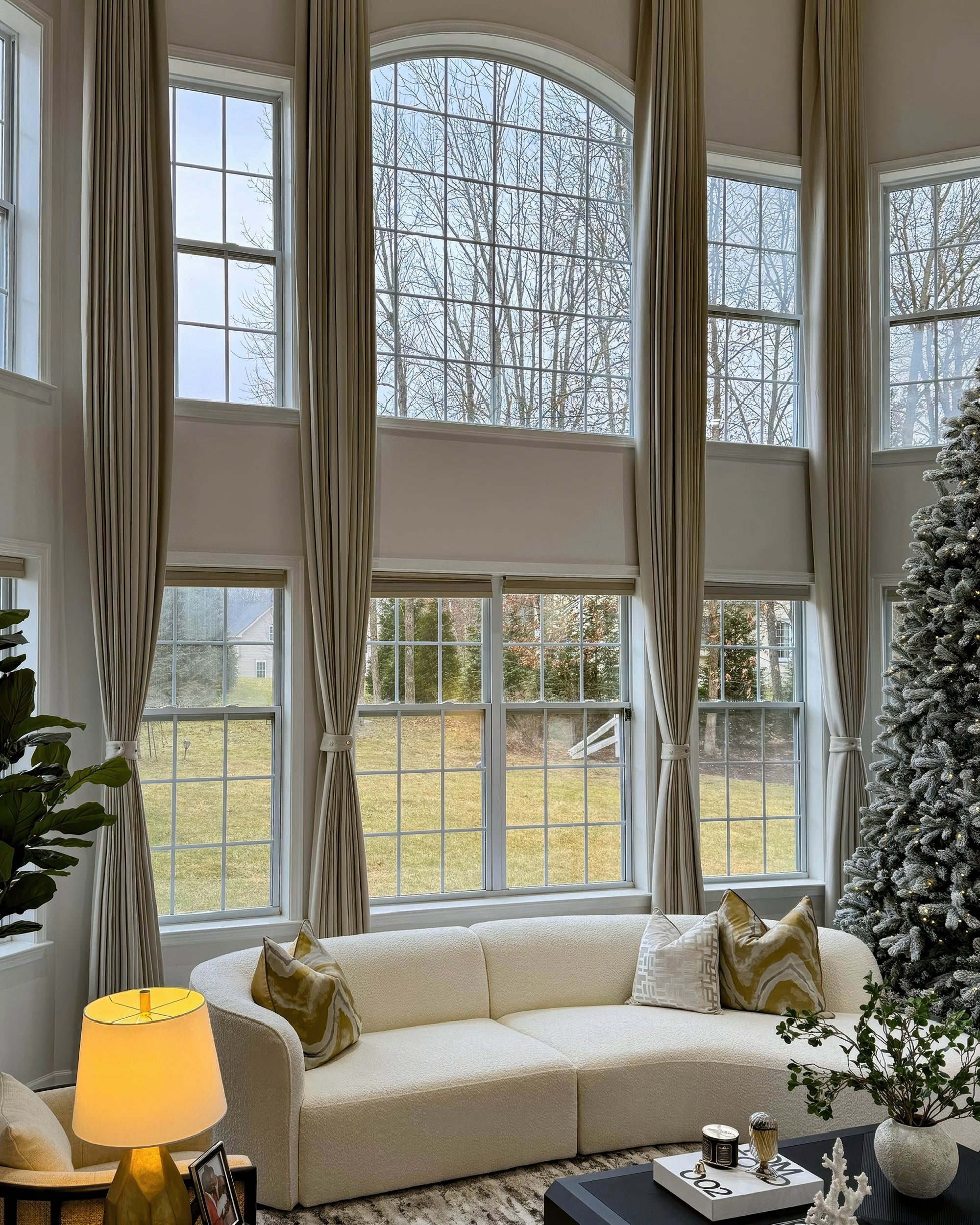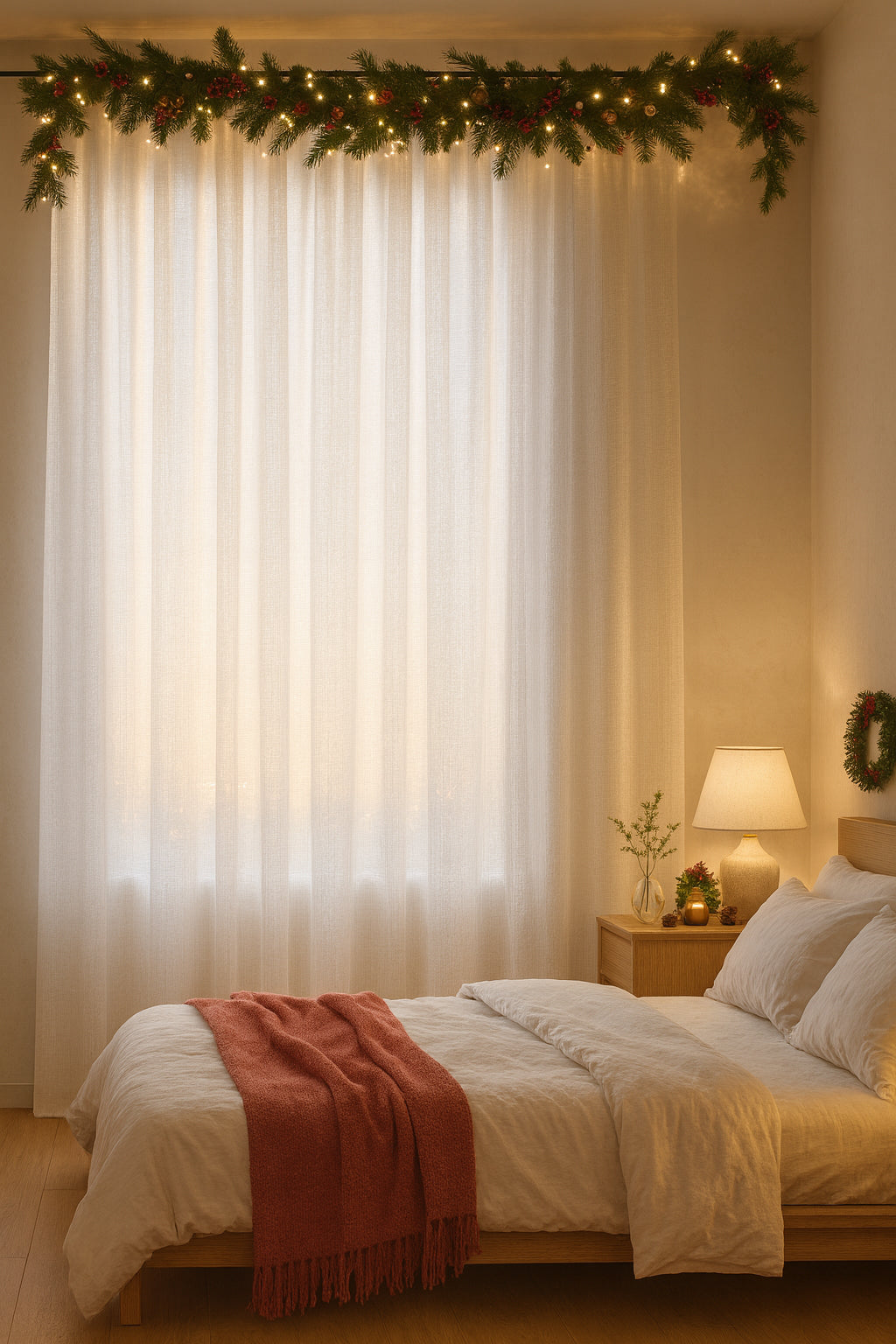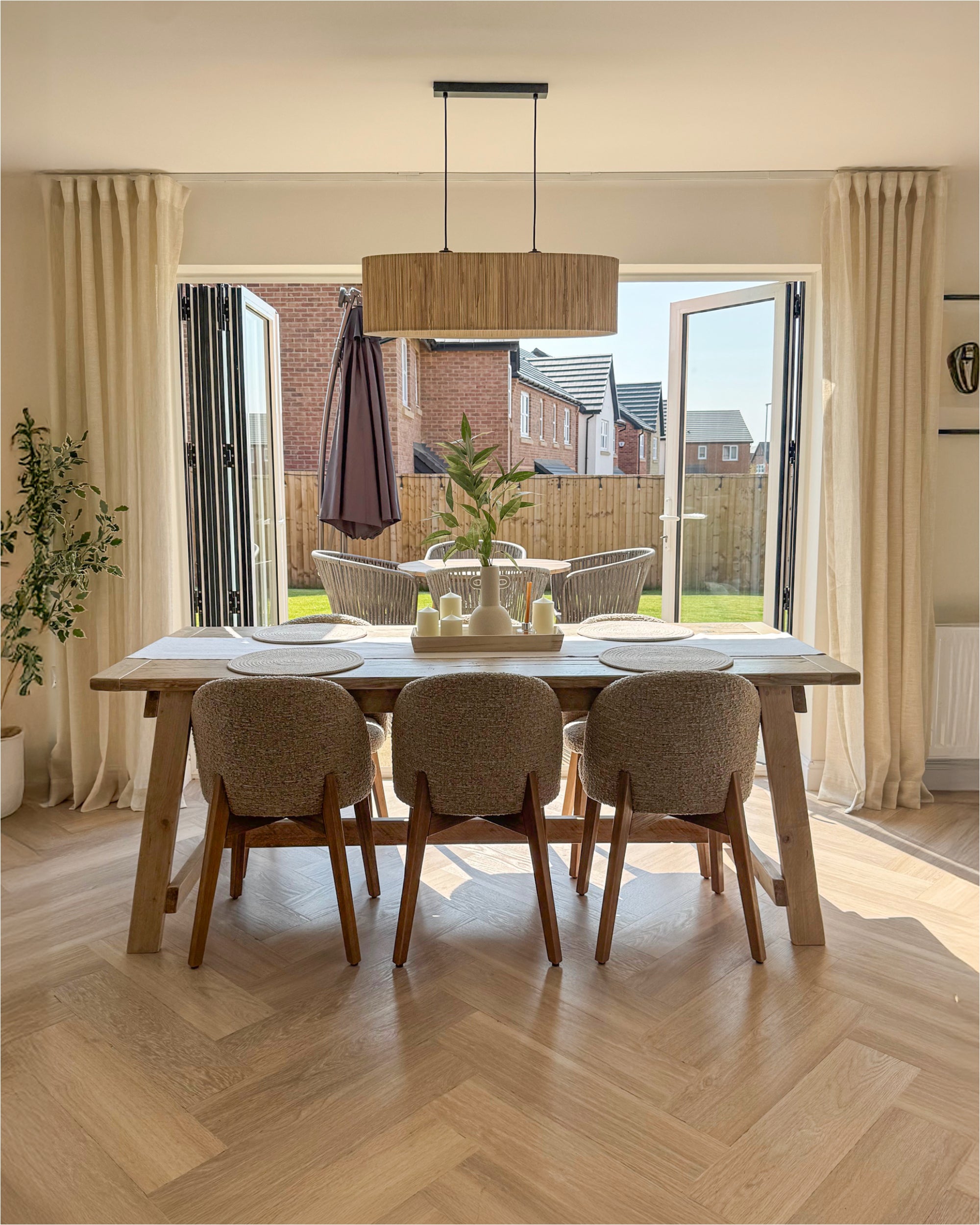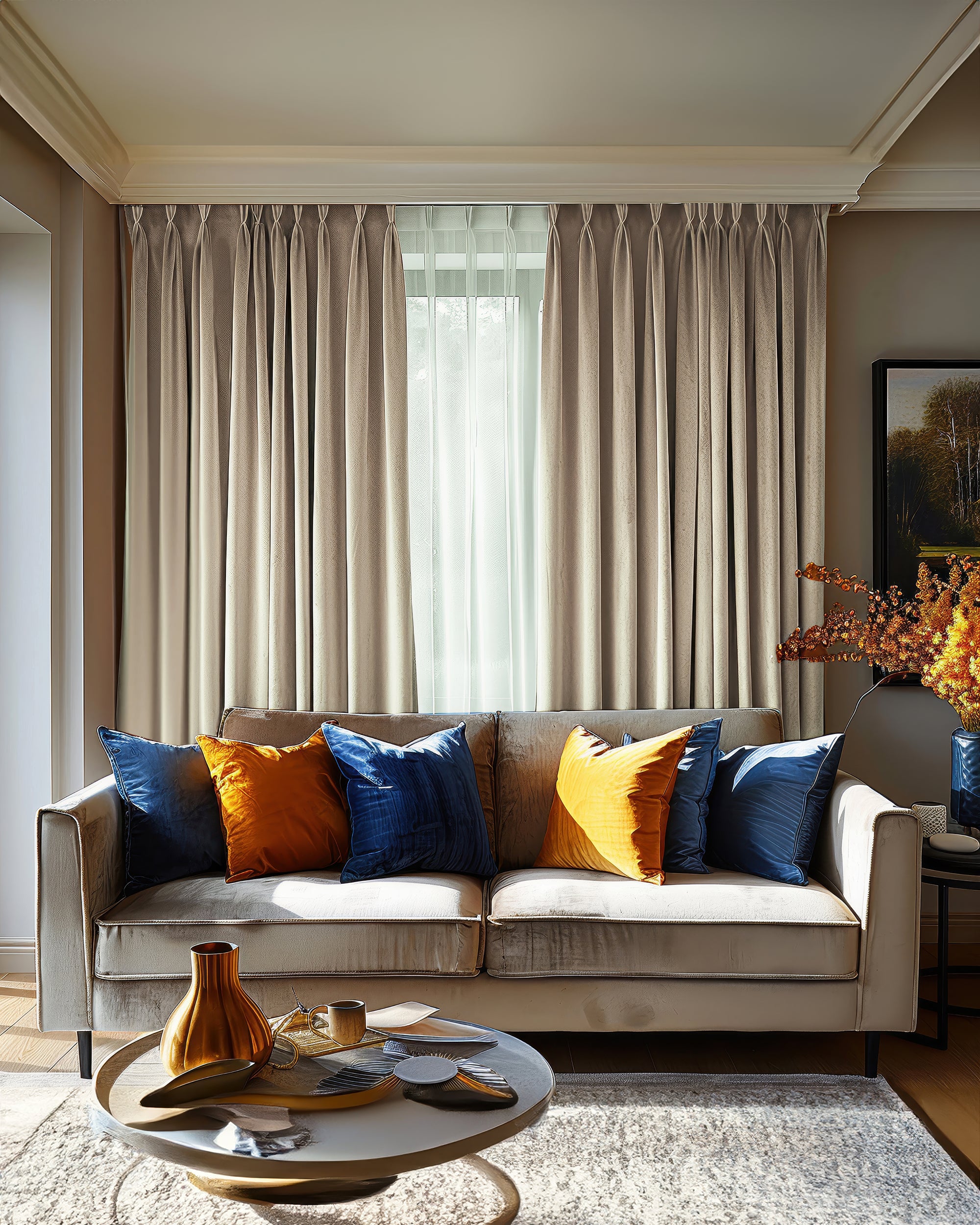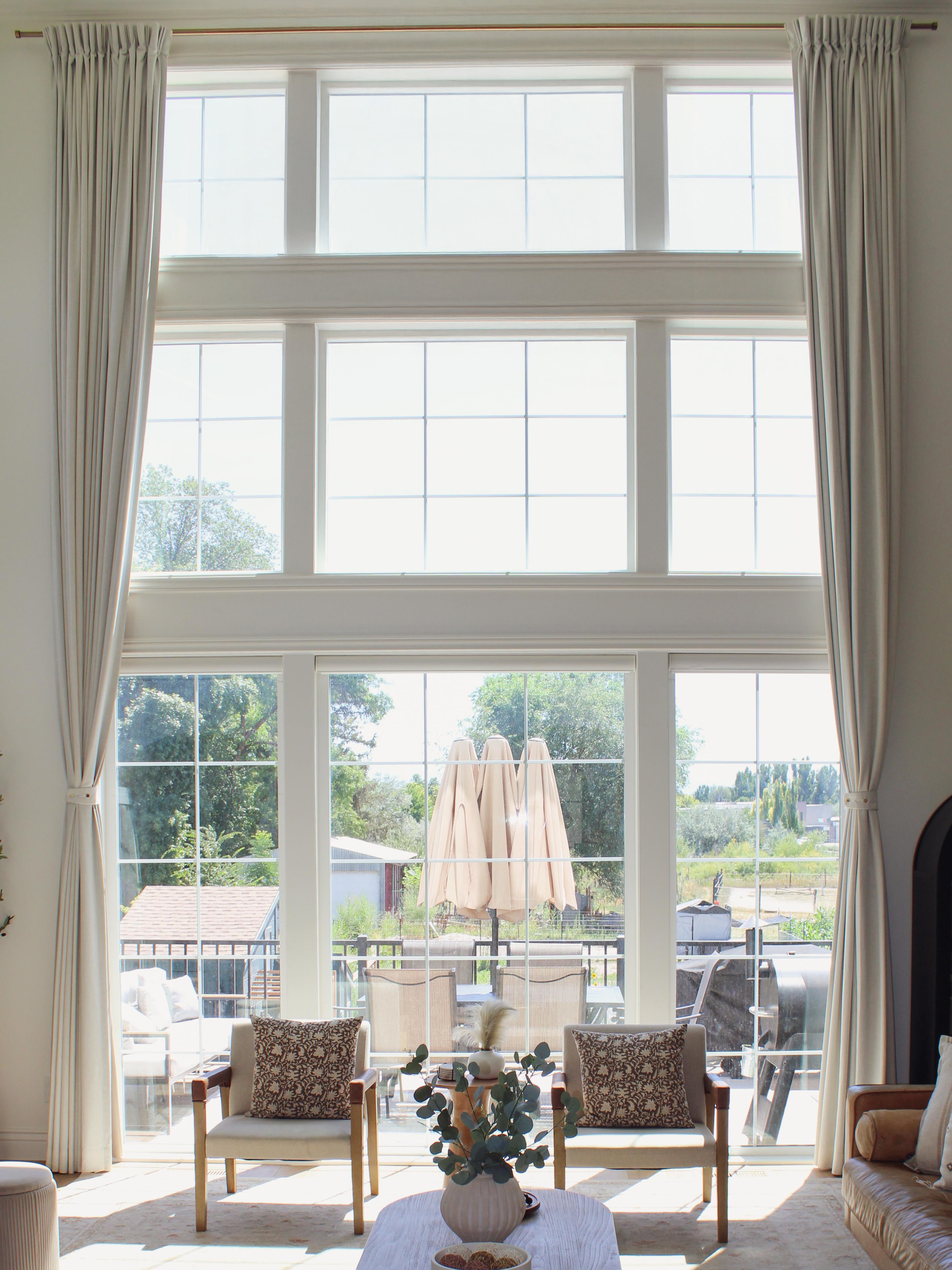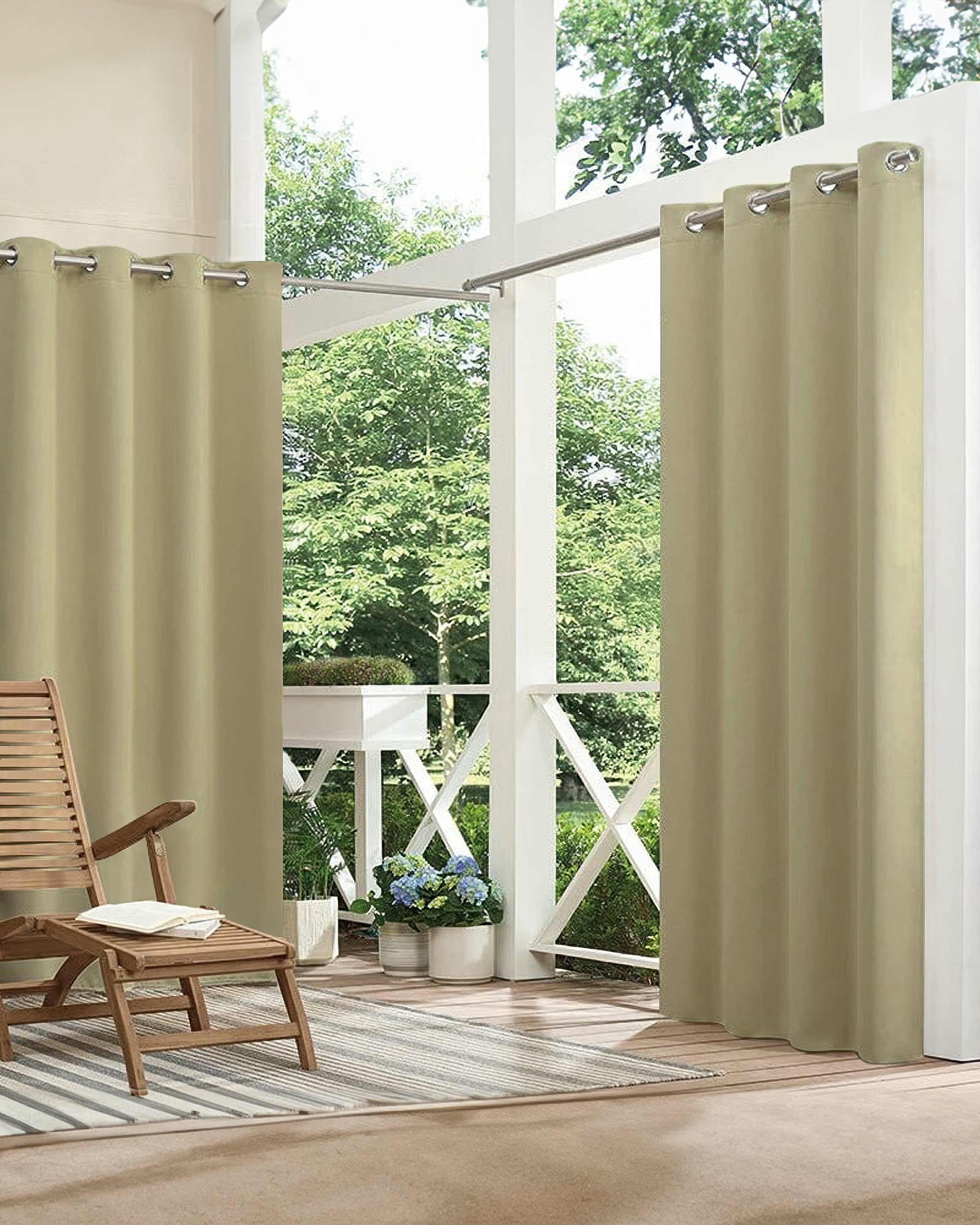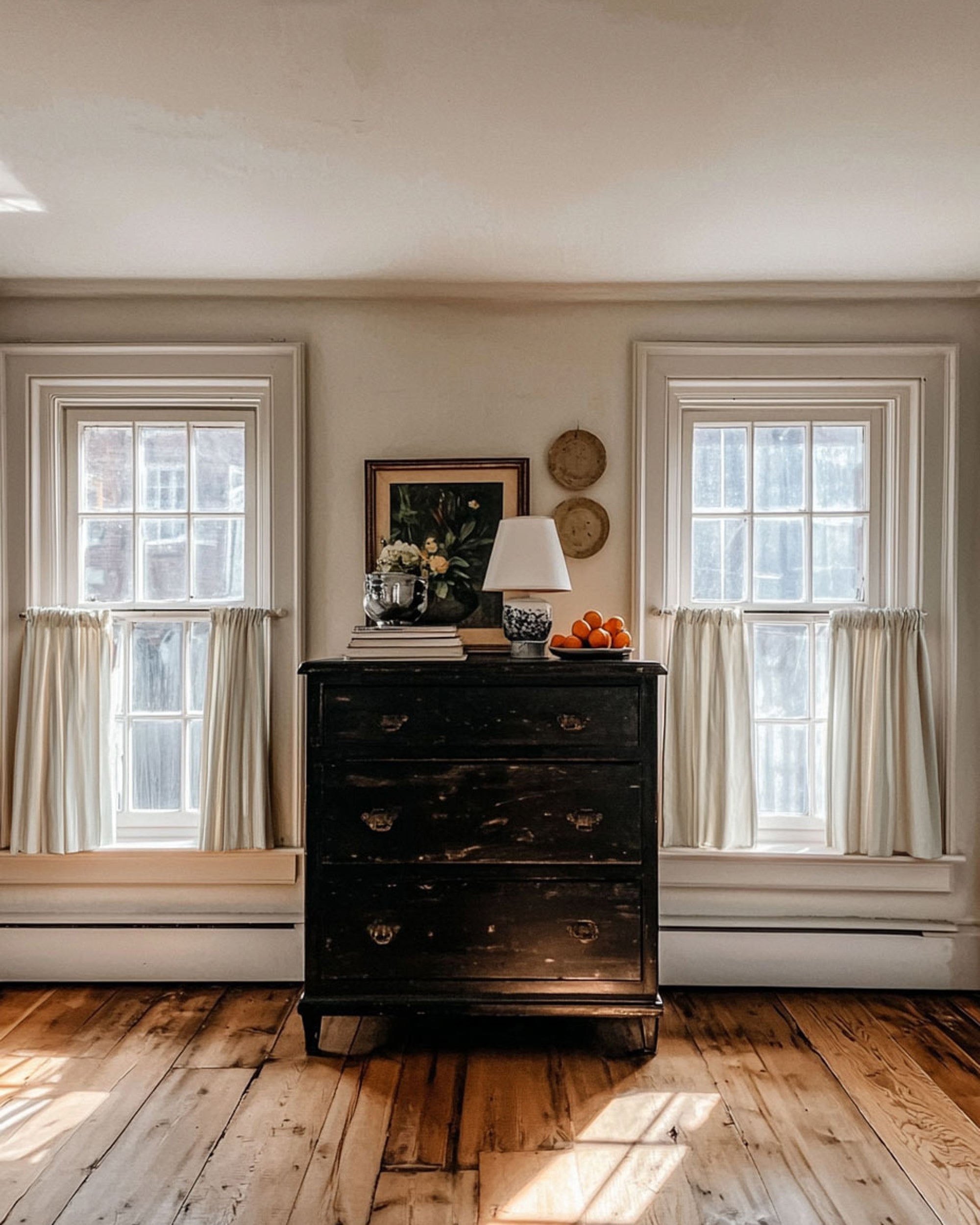If you’re ready to refresh your space, start with a simple change, such as new paint or curtains. Swapping in curtains with bold or soft tones can instantly shift the mood of a room. Whether you lean dramatic or understated, there’s a wide range of colors to explore.

Things To Consider Before Choosing Curtain Colors
Choosing curtain colors can be overwhelming, especially with the numerous fabric options and styles available. But with the tips below, you can narrow down your choices and confidently pick curtains that enhance your space.
Trimming Down Curtain Choices
Begin by considering the mood you want to create.
- For an airy, relaxed feel, opt for sheer fabrics in soft neutrals, such as cotton or linen.
- For a more dramatic or formal look, consider deeper tones in velvet curtains or textured weaves.
- Need versatility? Layer lightweight curtains with a heavier lining to balance light control and privacy.
Consider how much natural light the room gets. In sun-filled spaces, look for curtains that soften light without blocking it entirely. Sheer curtains with optional liners can offer the right balance.
How to Match Curtain Colors to Popular Wall Paints
What Color Curtains Go with Gray Walls?
Gray walls are a popular choice for modern interiors because they’re neutral, versatile, and easy to style. However, when it comes to choosing the right curtain color, the wide range of gray tones (warm, cool, light, and dark) means your curtain choice can significantly shift the room's mood.
Here are some of the best curtain colors to pair with gray walls:
White or Off-White
Crisp white or soft ivory curtains keep the look clean and classic. This combo works well in minimalist, Scandinavian, or coastal spaces and helps make the room feel light and open.
Charcoal or Dark Gray
Using a deeper shade of gray than your wall color adds depth without introducing a new color. This tone-on-tone look is subtle and sophisticated, especially with textured fabrics like linen or velvet.
Navy or Deep Blue
Blue is a natural complement to gray. Navy curtains, in particular, can create a dramatic contrast while maintaining a calm, cohesive atmosphere.
Blush or Soft Pink
Warm up cooler gray tones with blush, dusty rose, or muted terracotta. These add just enough color to soften the space without overwhelming it.
Mustard or Ochre
For bolder contrast, try rich yellow tones. Mustard curtains pop against gray walls and can energize the space without feeling too loud.
Bonus Tip: Always consider undertones. Cool grays pair well with cool-toned curtains (such as blue, white, or soft pink), while warm grays complement taupe, beige, or warm golds.
What Color Curtains Go with Blue Walls?
Blue walls offer a wide range of styling possibilities—from soft and coastal to bold and moody. The curtain color you choose can either enhance the calmness of blue or add contrast for visual interest.
Here are the top curtain colors that work well with blue walls:
White or Cream
Clean and timeless, white curtains keep the space feeling fresh and light. This pairing is perfect for beach-inspired or minimalist rooms.
Navy or Denim Tones
For darker blue walls, try curtains in a similar shade but a different texture. This creates a layered, tone-on-tone look that’s elegant and understated.
Soft Grays
Light gray curtains are a safe, neutral choice that balances blue walls without clashing. Especially great for modern or transitional spaces.
Warm Earth Tones
Rust, terracotta, or mustard yellow can warm up cool-toned blue walls and add contrast without overwhelming the room.
Muted Pinks or Blush
For a more romantic or soft aesthetic, blush or dusty rose curtains add a warm touch and pair beautifully with medium- to deep-blue walls.
Bonus Tip: Opt for natural fabrics (such as cotton or linen curtains) for blue walls to avoid overly shiny finishes that can compete with the wall color.
What Color Curtains Go with Green Walls?
Green walls bring a natural, earthy feel to a space, but pairing them with the right curtain color is key to maintaining balance and style.
Soft Neutrals
Cream, warm white, or light taupe curtains help tone down bold green walls and keep the room feeling bright. These work well in bedrooms or relaxed living spaces where you want a calm, grounded look.
Dusty Blue or Slate
For a soft contrast, try cool tones like dusty blue or slate gray. These cooler shades create balance and bring a modern, clean edge to green walls.
Patterned Neutrals
If you want more visual interest but don’t want to add another strong color, go for patterned curtains in neutral tones. Geometric prints or subtle florals in beige, white, or gray can add texture without clashing with the green.
Bonus Tip: Match your curtain hardware (such as curtain rods or rings) to any metallic accents in the room, like gold or black, to tie the entire look together.
What Color Curtains Go with White Walls?
White walls offer the most flexibility when it comes to curtain colors. Since they serve as a neutral canvas, you can go in virtually any direction—bold, subtle, warm, or cool.
Here are some of the best curtain color ideas for white walls:
Neutral on Neutral
Beige, gray, or taupe curtains create a soft, layered look that works well in calm and contemporary spaces. You get texture without too much contrast.
Bold Accent Colors
With white walls, you can introduce bold curtain colors like emerald green, navy, terracotta, or mustard to make the windows a focal point.
Tone-on-Tone Whites
If you love an airy, minimalist aesthetic, stick with white or off-white curtains. This works especially well with linen textures and adds elegance without introducing color.
Black
For a high-contrast and more graphic look, consider using a black curtain. This can add depth and dimension, especially in rooms with modern or industrial styling.
Bonus Tip: Use a curtain color to tie in accent colors from furniture, rugs, or artwork to create a cohesive, intentional design.
How to Choose the Right Color Curtains for Living Room
The living room sets the tone for your entire home, so the curtain color you choose should support both the function of the space and its design style.
Here are a few strategies to guide your choice:
Neutral base, bold accents: If your living room walls and furniture are in neutral tones (such as white, beige, or gray), you can use curtain colors like deep green, navy, or terracotta to add visual interest without overwhelming the space.
Match or contrast with the sofa: If your sofa is a statement piece (e.g., deep blue or mustard), choose curtains that either match it for a monochromatic feel or contrast it subtly for added depth, such as gray curtains with a blue sofa.
Complement your wall color: For white or off-white walls, almost any curtain color can be a good match. With bolder wall colors, choose curtains in lighter or darker shades of the same hue, or opt for complementary colors on the color wheel.

Bonus tip: Living rooms receive more traffic and visibility, so your curtain colors should complement your overall aesthetic and appear intentional, whether subtle or bold.
How to Choose Curtain Color for Bedroom
The right curtain color can completely change the feel of your bedroom, whether you want it to feel calm, cozy, or more expressive. Unlike other rooms, bedrooms are more personal, so your color choices should reflect the mood you want to create.
Here are a few ideas to help guide you toward the best curtain color for bedroom design:
For a Gray and White Color Scheme
If you’re wondering what color curtain to use for grey white bedroom skim, soft neutrals like taupe, light gray, or muted pastels can maintain the airy vibe while adding texture.
For a bit more contrast, deep charcoal or navy adds a sophisticated touch without overwhelming the space.
For a Pink Bedroom
When choosing a bedroom curtain color for pink room design, consider white or cream for a clean, fresh look—or go tone-on-tone with blush or dusty rose for softness. Deep burgundy or mauve can add depth without clashing with the wall color.
For a Calming Retreat
If you're looking for a good curtain color for a relaxing bedroom, choose cooler tones like sage green, slate blue, or warm beige. These colors help promote calm and blend easily with natural light.
For Bold, Cozy Vibes
Prefer something more dramatic? Rich tones like emerald, navy, or mocha can help your bedroom feel grounded and cozy, especially with layered textures.
No matter your style, choosing the right curtain colors for bedroom design should align with your wall colors, bedding, and overall palette. If you're unsure, start with a neutral base and build color through accents and accessories.
Bonus tip: If you're using blackout curtains, remember that even though they block light, the outer-facing fabric color still affects the room’s tone and overall vibe.
What Color Curtains Go with Brown Furniture?
Brown furniture adds warmth and depth to a space, but choosing the right curtain color can make or break the room’s overall look. The key is to either complement the earthy tones or contrast them intentionally for visual balance.
Here are the best curtain color directions to try:
Soft Neutrals
Shades like ivory, beige, or light gray work beautifully with brown furniture. They brighten the room and create a calming contrast without clashing. These colors are especially effective for creating a clean, airy atmosphere.
Earthy Tones
Think olive green, rust, terracotta, or mustard. These rich tones echo the warmth of brown, adding variety and texture to the palette. They're ideal for rustic, boho, or transitional interiors.
Cool Contrasts
If your space needs a fresher, more modern feel, try cool tones like slate blue, deep teal, or forest green. These create contrast while still feeling grounded.
Matching Deep Shades
For a dramatic, cohesive look, you can go deeper with curtain colors—such as chocolate brown or espresso—especially if the furniture has texture or variation in tone.
Avoid: Overly bright or neon colors—they can clash with the organic feel of brown furniture and feel out of place.
Bonus Tip: If your brown furniture has a red or orange undertone, choose curtain colors that harmonize with that warmth. If it leans cooler or darker, opt for colors with more gray or blue in them.
Final Thoughts
Curtains do more than frame your windows—they shape the mood, style, and flow of your entire room. Whether you’re working with bold wall colors, natural wood tones, or neutral palettes, choosing the right curtain color helps bring your space into balance. Use the tips above as a starting point, and don’t be afraid to experiment with color pairings that reflect your personal style. A well-chosen curtain can transform the room more than you think.



